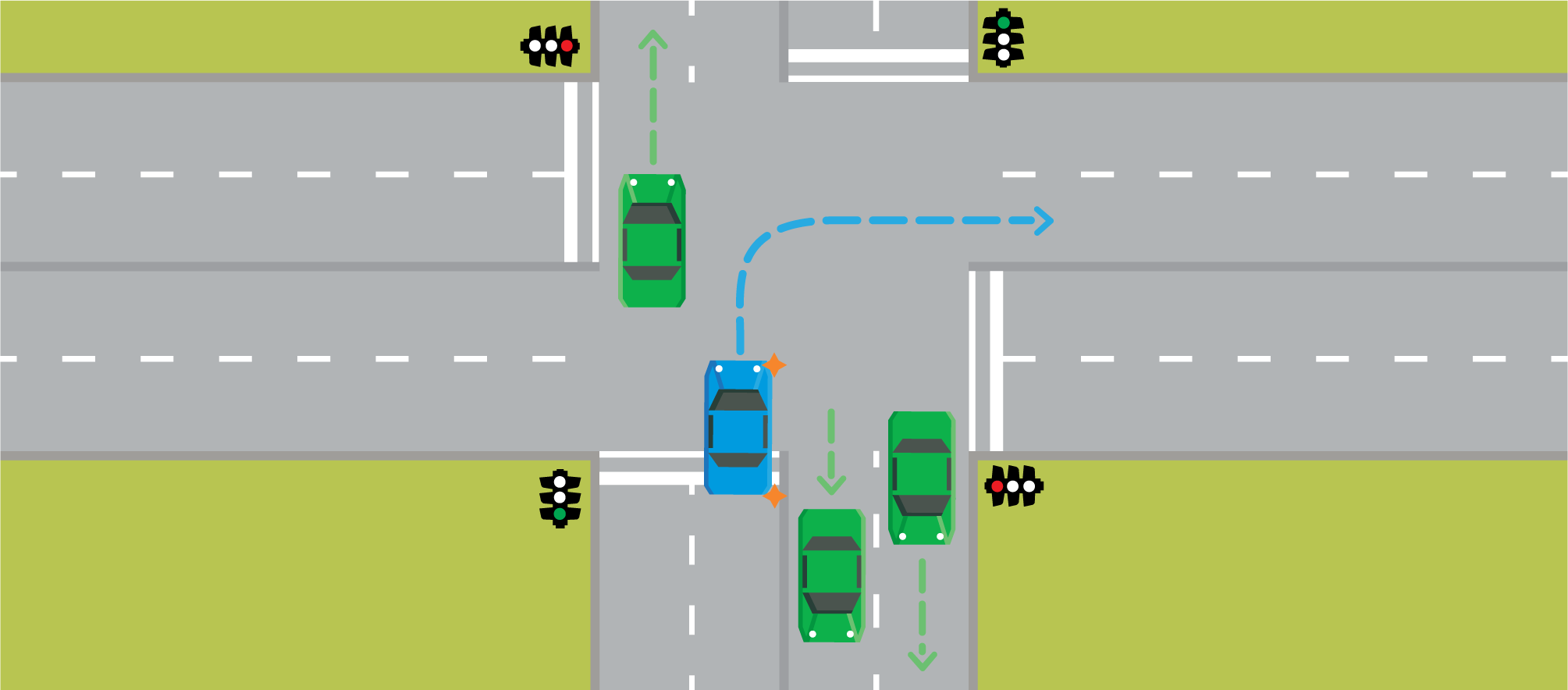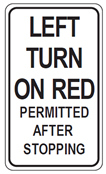Road rules in NT
Traffic lights
If you drive a vehicle in the Northern Territory, you must follow the relevant traffic light rules below.
Standard and turning arrows signal
Some intersections are controlled by traffic lights.
Some traffic lights may also have arrows to control traffic turning right or left.
If you're in a turning lane, the arrows will tell you when you can go or stop in the same way as a standard traffic light does.
Red signal


A red circle or arrow means stop. You must wait behind the stop line.
Don't go through the intersection.
This includes cyclists and motorcycle riders who are lane filtering.
Yellow (amber) signal


A yellow (amber) circle or arrow means stop.
You can only enter the intersection if you're so close that sudden braking might cause a crash.
If the circle or arrow is flashing, you may proceed with caution while obeying the give way to the right rule or the T-intersection rule.
Green signal


A green circle or arrow means proceed through the intersection carefully.
You must give way to:
- other vehicles and pedestrians in the intersection, including turning traffic
- pedestrians if you're turning to the right or left
- vehicles from the opposite direction if you're turning right.
Turning right at an intersection
If you're turning right, you can also follow the below steps as a guide:
Step 1. Enter the intersection as shown in the diagram below, unless a sign indicates otherwise or there is a red right turn arrow displayed.
Step 2. Wait until oncoming traffic clears or breaks and then turn safely.
Step 3. If the light changes to yellow or red while you're in the middle of the intersection, you can continue to turn right.
Step 4. While you're waiting to turn, make sure your front wheels and car are straight so it's not blocking the oncoming traffic.
Step 5. You must turn as soon as it's safe to do so.
The diagram below shows the blue car entering the intersection to turn right at the traffic lights.

Rules around buses and 'B' signal
Some traffic lights may also have a ‘B’ signal to control traffic around buses at intersections.
The ‘B’ signal only applies to buses, all other traffic must follow the main traffic lights.
If no ‘B’ signals are displayed, buses must obey the main lights.
When the standard traffic light turns green, other vehicles can proceed through the intersection with caution as buses may still be merging with traffic.
Follow the instructions below.
Red 'B' signal

A red ‘B’ signal means buses stay.
The green standard traffic light means other vehicles go.
White 'B' signal

A white ‘B’ signal means buses can go.
The red standard traffic light means other vehicles can't go.
For more information about rules around buses, read about giving way and road safety and buses.
Road sign
For road signs at traffic lights, follow the relevant instructions below.
No right or left turn
Standard or illuminated signs show when a right or left turn is prohibited. There are some areas when you can only turn during certain times of the day.
Where a time period is displayed on or near the sign, it shows when the sign applies - eg. 7am to 10am.
If there is no time period, the sign applies at all times.
Left turn permitted on red light

A left turn on a red light is only allowed at intersections where a 'left turn on red after stopping' sign is displayed
When turning left, you must give way to all traffic approaching from the right.
U-turns
You must not make a U-turn at an intersection with traffic lights unless there is a 'U-turn Permitted' sign.
When making a U-turn you must:
- give way to all other traffic and pedestrians
- not obstruct traffic approaching from the front or behind.
Other signs
For more information on other road signs, read road signs in the Northern Territory.
Print all pages in this section
Give feedback about this page.
Share this page:
URL copied!